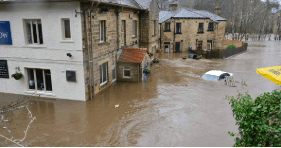Fire Damage Restoration: A Guide to Rebuilding After a Fire

Following a fire, the path to recovery can be complex, requiring a systematic approach to fire damage restoration. The initial steps involve a thorough assessment of the damage, which is critical for effective planning and insurance documentation. Understanding the nuances of rebuilding, including the appropriate materials and adherence to safety regulations, is paramount. As we explore the essential phases of this process, it becomes evident that each decision made during restoration can significantly impact not only the immediate outcome but also future safety and resilience. What are the key considerations that should not be overlooked?
Initial Steps After a Fire
Recovering from a fire can be a daunting process, requiring immediate and careful action to ensure safety and minimize further damage.
Prioritize emotional support for affected individuals, as this trauma can deeply impact mental well-being.
Implement essential safety precautions, such as avoiding structural instability and hazardous materials.
Establish a secure environment before initiating recovery efforts, fostering a sense of control and resilience during this challenging time.
Assessing Fire Damage
In the aftermath of a fire, a meticulous assessment of the damage is crucial to effectively plan restoration efforts.
Evaluating the extent of smoke damage is essential, as it can permeate materials and impact air quality.
Additionally, assessing the structural integrity of the building ensures safety during the restoration process.
These evaluations form the foundation for informed decision-making and successful recovery.
See also: Rajkotupdates.news games : garena free fire & pubg india
Insurance Claims Process
Following a thorough assessment of fire damage, the next vital step involves navigating the insurance claims process.
Ensure you understand your insurance coverage thoroughly, as it dictates your claim’s potential success.
Collect all necessary claims documentation, including photographs and repair estimates, to substantiate your claim.
This meticulous approach can empower you to reclaim your property and restore your sense of security effectively.
Rebuilding and Restoration Strategies
The journey toward rebuilding and restoration after fire damage is marked by resilience and careful planning.
Prioritize fire safety by integrating advanced materials, such as fire-resistant drywall and non-combustible roofing.
Choose rebuilding materials that enhance structural integrity while promoting a safe environment.
Collaborate with professionals to ensure compliance with local codes, optimizing both safety and freedom in creating a revitalized space that meets your needs.
Conclusion
In the aftermath of a fire, the restoration journey transforms devastation into renewal, breathing life back into charred remnants. Each meticulous step, from damage assessment to the implementation of fire-resistant materials, weaves a tapestry of resilience. The daunting insurance claims process, often fraught with challenges, becomes a catalyst for recovery. Ultimately, the rebirth of a space not only restores its former glory but fortifies it against future threats, epitomizing the indomitable spirit of human ingenuity and perseverance.




